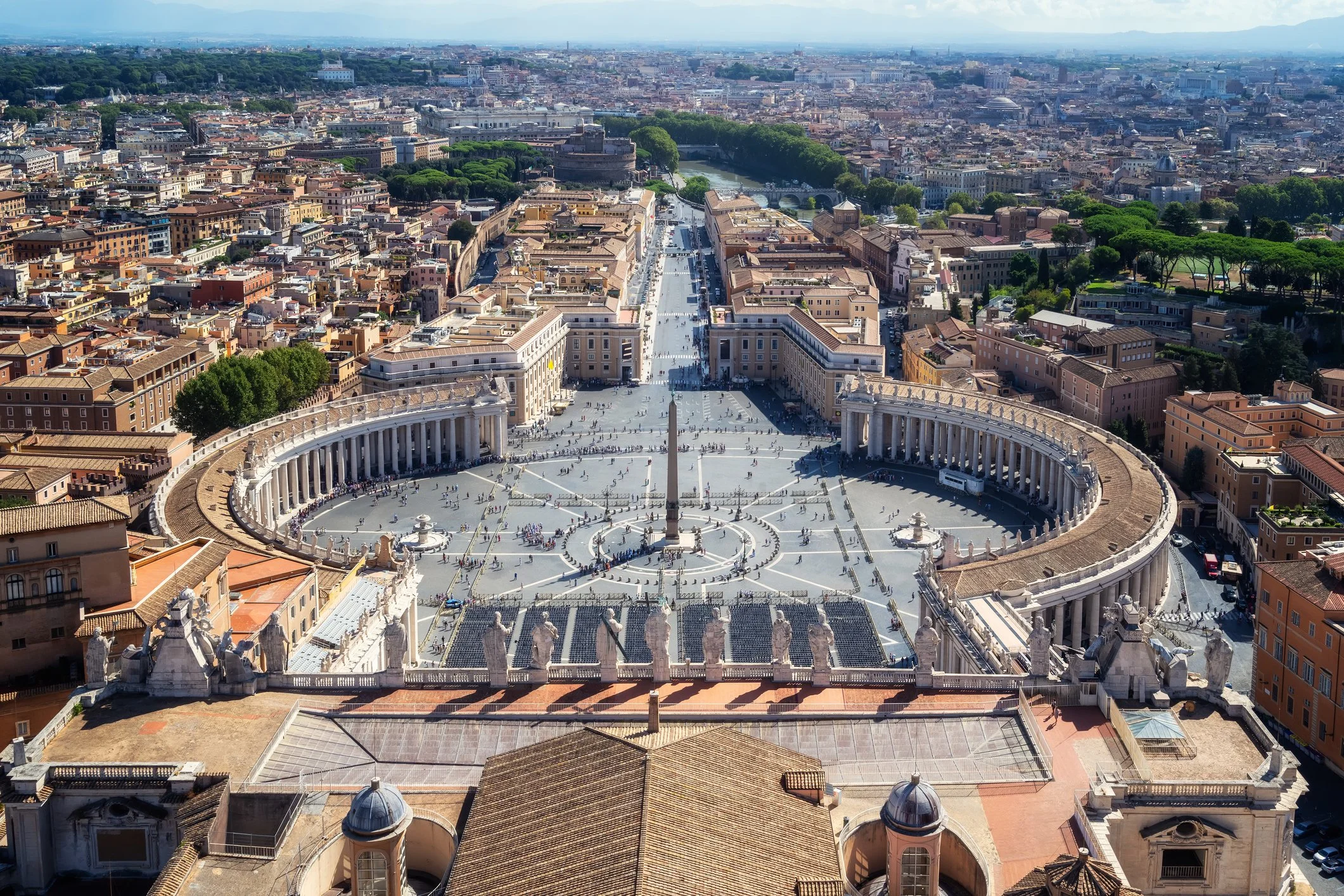ROM
‘Eternal City.’
Rome is an ancient classical city that developed around the River Tiber, built upon seven hills inland from the Tyrrhenian Sea and the port of Ostia.
With its long cultural and ecclesiastic history and the adjacent but separate Vatican City, it developed organically within and around its hillsides, and has been extending outwards on defined axes in radial directions.
Maps of Rome
Overview
Streets and Networks
Satellite View
All maps above provided courtesy of Google Maps.
Population Density
Visualising population density in Global Cities
This interactive map shows population density in 2020, measured in residents per square kilometre.
The data is from the ‘Global Human Settlement Layer’ (GHSL) 2023, produced by the European Commission JRC and the ‘Center for International Earth Science Information Network’ at Columbia University using earth sensing data from the European Copernicus Space Program that Integrates high volumes of satellite data with national census data.
The GHSL describes the settlement geography of the entire globe and has applications for a wide range of research and policy issues related to urban growth, development and sustainability.
Map provided courtesy of LuminoCity3D.org.
Rail Networks
Rail and transport networks in Global Cities
The above map represents the urban metro and light rail network of the city and immediate suburbs. This shows individual rail routes and the level of connectivity for urban travellers across the expanding city’.
Map provided courtesy of UrbanRail.net.
Journals
19. Rome + extract (Charles Dickens & Steen E. Rasmussen)
‘We entered the Eternal City… by the Porta del Popolo and came immediately on the skirts of the Carnival… We had crossed the Tiber by the Ponte Molle two or three miles before. It had looked as yellow as it ought to look… and had a promising aspect of desolation and ruin… The next day we hurried off to St Peter’s.’










